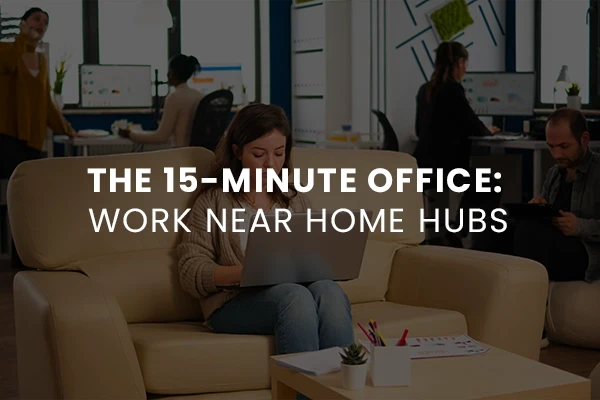The 15-Minute Office: Work Near Home Hubs
In recent years, the traditional concept of commuting has undergone a significant transformation. The once-standard daily journey to centralised office locations is being replaced by a preference for working closer to home. This shift has given rise to the concept of the "15-minute city", where essential services and workplaces are accessible within a 15-minute walk or bike ride from one's residence.
This urban planning model emphasises decentralisation, promoting the development of local hubs that cater to the daily needs of residents, including their professional lives. The integration of workspaces into residential neighbourhoods not only reduces commute times but also fosters a sense of community and enhances work-life balance.
The Role of Aggregators in Facilitating Local Workspaces
The proliferation of localised work hubs has been significantly aided by workspace aggregators. These platforms connect professionals with nearby coworking spaces, offering a range of options tailored to individual needs. By leveraging technology, aggregators simplify the process of finding and booking flexible workspaces, making it easier for individuals to work closer to home.
Aggregators also provide valuable insights into workspace utilisation patterns, helping operators optimise their offerings and align with the evolving demands of the workforce. This symbiotic relationship between aggregators and workspace providers is instrumental in the growth and sustainability of the 15-minute office model.
Benefits of the 15-Minute Office Model
1. Enhanced Work-Life Balance:
Working near home allows individuals to reclaim time previously spent commuting, enabling them to engage more fully in personal and family activities. This balance contributes to overall well-being and job satisfaction.
2. Environmental Impact:
Reduced reliance on long commutes decreases traffic congestion and lowers carbon emissions, contributing to environmental sustainability goals.
3. Economic Revitalisation of Neighbourhoods:
The establishment of local work hubs stimulates economic activity in residential areas, supporting small businesses and fostering community development.
4. Increased Productivity:
Access to professional work environments close to home can enhance focus and efficiency, providing an alternative to the distractions often encountered when working from home.
Challenges and Considerations
While the 15-minute office model offers numerous advantages, it also presents challenges that need to be addressed:
1. Infrastructure Development:
Implementing localised work hubs requires investment in infrastructure to ensure that facilities meet the needs of diverse professionals.
2. Digital Connectivity:
Reliable high-speed internet is essential for remote work. Ensuring consistent connectivity across all neighbourhoods is crucial for the success of local workspaces.
3. Inclusivity:
Efforts must be made to ensure that the benefits of localised work hubs are accessible to all segments of the population, including those in underserved communities.
The Future of Work: Embracing Flexibility and Proximity
The rise of 'work near home' hubs signifies a broader shift towards flexibility and employee-centric work models. As organisations recognise the value of accommodating diverse work preferences, the integration of localised workspaces becomes a strategic imperative.
By embracing the 15-minute office model, companies can attract and retain talent seeking flexibility, contribute to sustainable urban development, and foster resilient communities. The collaboration between workspace aggregators, urban planners, and businesses is key to realising the full potential of this transformative approach to work.
